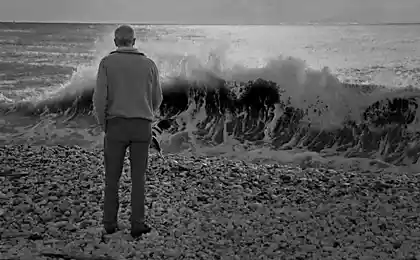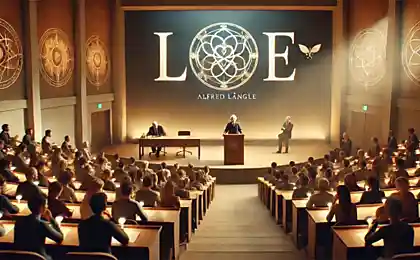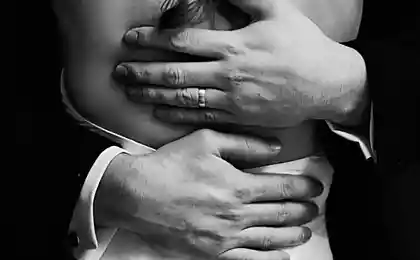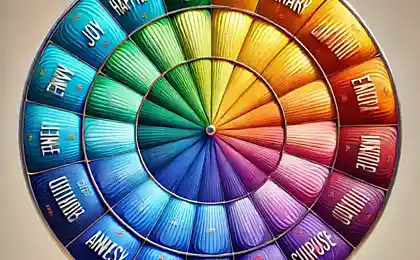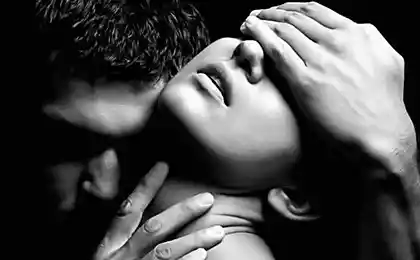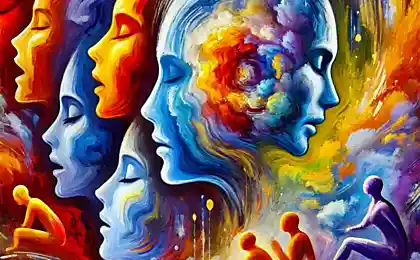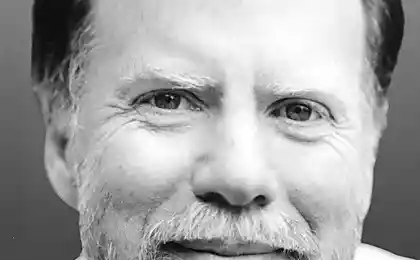320
A guide to psychology. Issue 8. Love and Romance: A Complex Mosaic of Feelings and Relationships
Description: This article focuses on the depths of love and romantic relationships. We will examine what underlies strong attachment, why love is not reduced to one emotion, and how psychological theories explain the complex process of forming mutual intimacy.
List of all articles in the cycle

Introduction
If you think about the most vivid, emotionally intense experiences, it is almost certain that many of us will call love.
This theme has inspired poets, artists and musicians for centuries and continues to be relevant to this day.
But what is love in terms of psychology? Why we can fall passionately in love, seemingly for no reason
Do we build relationships with others more rationally? How do we know if our attachment is true or just an illusion of the senses?
Love is a complex mosaic composed of different elements: passion. attachment, emotional resonance,
Common interests and even biological factors (such as hormones).
As soon as we try to reduce this concept to a single formula, we invariably encounter its versatility.
In this article, we will look at the psychological concepts of love and romance, explore what mechanisms make us feel “butterflies in the stomach”.
Let’s see what a healthy romantic relationship is.
Main part
When the heart beats: The biology and neurochemistry of love
One of the first steps in understanding the phenomenon of love was the discovery that falling in love is closely related to love. hormones and neurotransmitters.
For example, elevated levels of dopamine and norepinephrine create feelings of elevated mood and excitement.
Which we associate with romantic passion. simultaneously serotonin may fall, causing obsessive thoughts about the object of falling in love.
Therefore, in the early stages, we are often obsessed with idealization and literally cannot get the person out of our heads.
When the relationship becomes more stable, it comes to the scene. oxytocin - attachment hormone,
It builds emotional intimacy and trust. Because of these biochemical processes
We strive not only for bright sensory flashes, but also for long-term support, mutual understanding and calm happiness next to the loved one.
Of course, this does not mean that love is reduced to “chemistry”, because both social and psychological factors come into play.
The quality of our relations directly depends on it.
The Triangle of Passion, Intimacy and Commitment
One of the most famous psychological models of love is Robert Sternberg’s triangular theory of love.
He identified three components that can be present in a pair in different combinations:
- Passion.. Physical attraction, sexual desire and strong emotional experiences.
- Intimacy. Warmth, trust and intimacy between partners who share their feelings and thoughts.
- Obligations. The decision to "be together" and make long-term plans, keeping mutual promises.
- If a couple develops only passion, without intimacy and commitment, it is more a passion or falling in love.
- If there is intimacy and commitment, but no passion, it can be a friendly love, often found in long marriages.
- If there are all three components in a relationship, Sternberg calls it. "perfect love.".
Real relationships often change over time. Today, high passion can cool down tomorrow.
Intimacy can grow into something more when we share important stages of life.
The main thing is to realize the value of each component and be able to maintain balance, taking into account the natural dynamics of feelings.

Attachment and relationship style
We cannot understand romantic relationships by ignoring the attachment model.
It's something that we all develop in childhood based on our experiences with parents or caregivers.
Psychologist John Bowlby highlighted Reliable, anxious and avoidable attachment, indicating,
This pattern influences how we behave in love. Adults with “reliable” attachment are more likely to build harmonious bonds.
where both partners can express feelings and trust each other.
Those who have an “alarming” attachment are often afraid of losing their beloved, seeking constant confirmation of his love.
This can lead to jealousyExcessive emotional dependence or panic response to short-term conflicts.
People with “avoidant” style, on the contrary, try to keep their distance, fearing intimacy and vulnerability.
Preferring to “get out” when a relationship requires an open conversation about feelings.
Of course, the attachment style is not an invariable sentence — recognizing your inclinations,
We can change stereotypes and work towards healthier communication with our partners.
Culture and individual expectations: romance without borders?
Sometimes we wonder why some people are happy in relationships built on friendship and respect.
Do others need an endless drive of passion and dramatic quarrels with reconciliation?
Here comes the cultural context.
In some cultures, the classical romantic ideal involves vivid emotional manifestations, gifts, surprises.
In others, romance can be expressed in more restrained but profound actions.
in long joint workdays, where "silent support" is valued.
Ours. expectations They also play a role. We shape them through movies, books, environments.
It's also based on past experience. Someone idealizes “love at first sight.”
The other sees the relationship as an elaborate partnership. Understanding where our ideas of love come from
It helps to avoid unnecessary disappointments and teaches us to look more flexibly at opportunities for happiness.

Problems and conflicts: when the mosaic cracks
Love relationships, however harmonious they may seem, face crises. There are many reasons:
- Value differences. Partners may have different views on family, career or finances.
If this is not discussed in time, discontent and misunderstanding accumulate. - Communication barriers. Unconstructive criticism, resentful silence, inability to listen
All this undermines the foundation of trust and mutual understanding. - Infidelity or betrayal. Statistics show that infidelity is one of the main reasons for the breakup.
It's about the basic level. trustwhich is extremely difficult to restore. - Boredom and routine. After the “candy and bouquet period”, the relationship can “stagnate”.
If partners do not invest in the renewal and development of the connection, they risk losing emotional intimacy.
It is only important to be able to engage in dialogue, find compromises and perceive criticism as a growth point, not as a personal insult.
Many couples who have gone through major crises say that this is what helped them get to know each other more deeply.
build a more mature relationship.
Conclusion
Love is one of the most powerful, inspiring and at the same time complex feelings we can experience.
It is associated with biological chemistry and psychological processes, attachment and cultural background.
Romantic ideals and pragmatic expectations.
This “complex mosaic” of feelings and relationships does not fit into one formula and is not reduced to the banal stereotype of “found your soul mate”.
In fact, love can evolve and change with new meanings if both partners are willing to work together.
support and honest dialogue.
No matter how you define romance, whether it’s walking under the stars or teamwork on shared projects.
It is worth remembering that love does not live alone: it requires care, attention and the ability to see in another not just an object of admiration.
But a full-fledged person with their own needs and vulnerabilities.
If we want to better understand our emotional sphere, then studying the psychology of love is an important step towards harmonious relationships.
Whether it's a passionate romance or a long-term family union. Let no science answer all the questions about love.
Her secret will continue to inspire us to look for the best. beautiful Ways to express feelings.
Glossary
Attachment
Emotional connection that is formed from an early age and affects how a person builds relationships in adulthood.
dopamine
The neurotransmitter associated with pleasure, motivation and reward is actively developed at the stage of falling in love.
The Triangular Theory of Love
Robert Sternberg’s concept describes love through three components: passion, intimacy and commitment.
Secure attachment
A relationship style in which a person can openly express their feelings, trust a partner and build a deep emotional connection.
Avoiding attachment
A relationship style in which a person tends to keep distance, limiting emotional intimacy for fear of vulnerability.
Communication barriers
Difficulties and distortions in the exchange of information and emotions, leading to conflict and misunderstanding in relationships.
A guide to psychology. Issue 7. Friendship and Trust: Gaining a Close Circle
A guide to psychology. Issue 9. Empathy and Empathy: Sharing the Joy and Pain of Others


